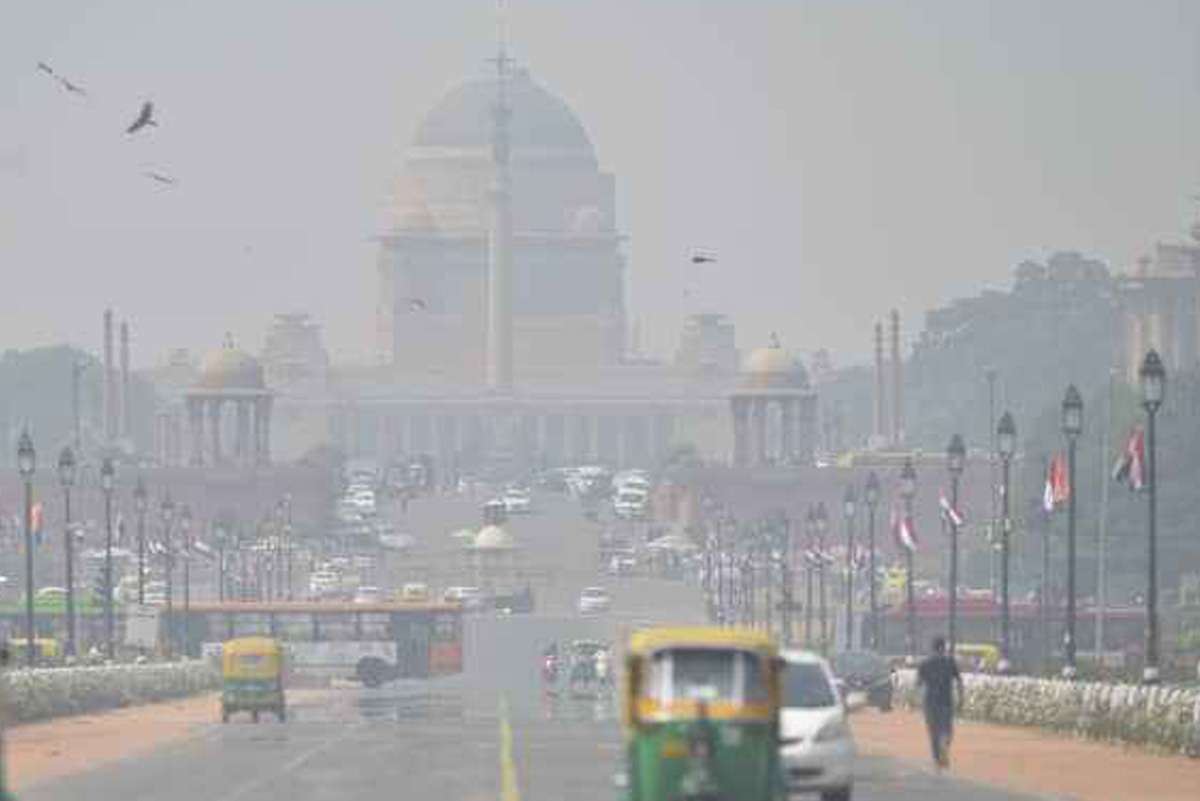Between October and December, there is neither wind movement nor moisture to remove pollutants over Delhi. This is what happened in 2016 when PM2.5 particles in the air spiked to 16 times the permissible limit
Weather impact
- The low temperature and fog creates a dense blanket-like layer over the atmosphere
- Rays from the sun hit this layer and reflect back
- There is high pressure and that allows wind and dust particles to sink, and settle to to the ground
- Because of the lack of vertical movement of wind, which is the condition of temperature inversion, the cycle breaks, and the pollutants remain trapped in the air
- Anticyclonic circulation and calm winds aggravate the temperature inversion.
Composition of polluted air
Air pollution consists of various components. This includes:
PM2.5
Tiniest, most unhealthy, high levels in winter
PM10
Another lead pollutants on winter days
Ozone
Forms when oxides of nitrogen (NOx) react with volatile organic compounds in bright sunlight. Lead pollutant in summers
MAJOR POLLUTANT SOURCES
Diwali Firecrackers: Diwali in Delhi was more toxic than the last one as the maximum levels of several gases and particles went up. On Diwali, the PM2.5 levels were 42 times higher than the prescribed 60micrograms per cubic meter.
Components: Nitrogen oxide, PM2.5, carbon monoxide, sulphur dioxide
Stubble & waste burning
By mid-October, farmers in Haryana and Punjab start burning their fields after harvest to get rid of the stubble remains. IIT Kanpur’s study shows that 26% of Delhi’s PM2.5 levels in winters come from agriculture stubble and leaf burning in neighbouring states.
Components: Carbon dioxide, PM2.5, mercury
Road dust
Delhi generates almost 4000 tonnes of debris everyday and the sole processing plant can only deal with 10% of it. IIT Kanpur study quoted construction and road dust to be the largest contributor of PM 10 and 2.5 levels.
Components: PM10, soot, sulphate, silicates, carbon monoxide, hydrocarbons
Vehicular emission
Delhi has over 8.9 million registered vehicles. Additionally, up to 100,000 trucks enter the city after 10pm. Studies show that the city’s average speed has gone down from 20km/hr to 5km/hr. Experts say lower speeds cause higher emissions.
Components: PM2.5, PM10, hydrocarbons, nitrogen oxides
Thermal power plants
A study conducted by NASA showed that S02 emissions in India increased by over 60% from 2005 to 2012. Over half of it came from coal-fired power sector. A Green Peace study showed coal emissions enter Delhi from plants as far as 300kms away.
Components: Arsenic, lead, selenium


Alok Sheoran
Thanks